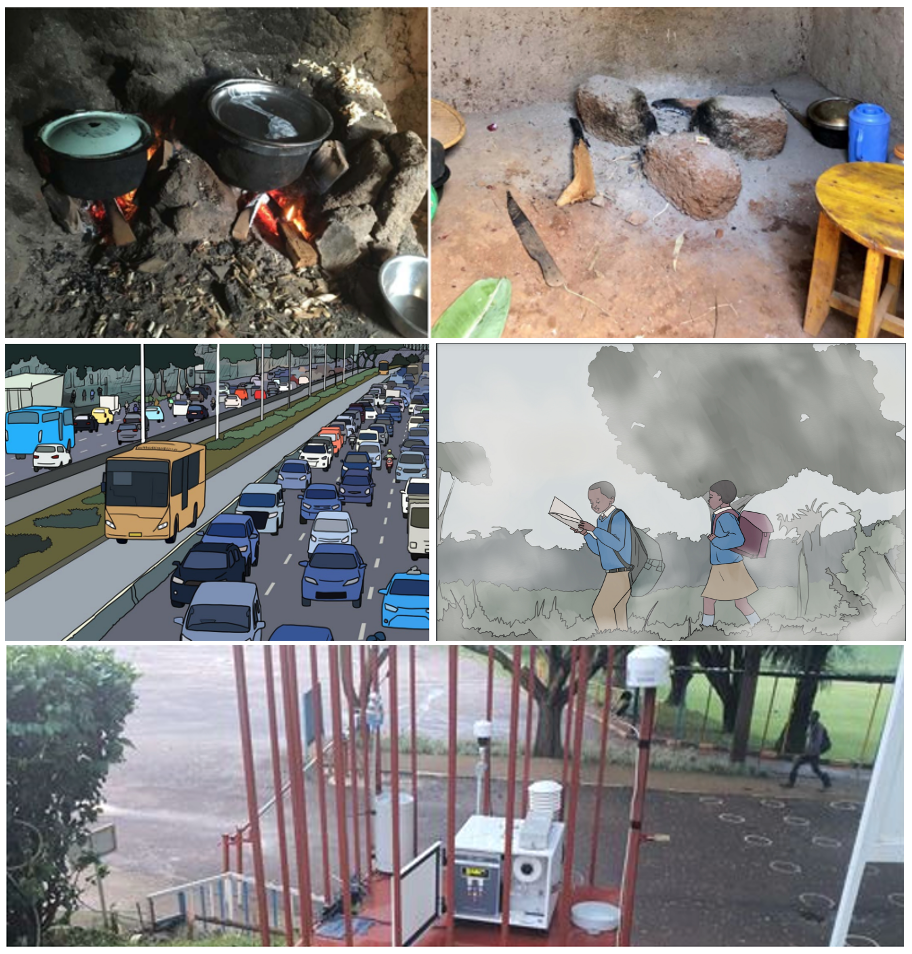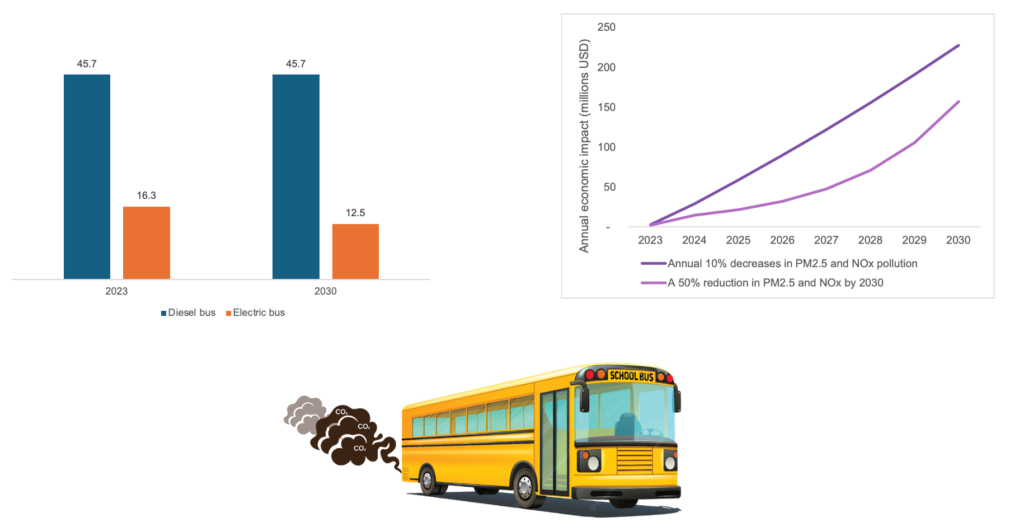Exposure
To increase our understanding of human exposure to environmental pollutants and how to reduce those exposures.
Implement: Design rigorous research on air pollution health effects and disseminate interventions for reducing
exposure to air pollution and associated adverse health outcomes in low-income communities.


Bioaerosol, eDNA
bioaerosols are an important aspect of air pollution, with implications for human health, occupational safety, and environmental quality. Understanding their sources, composition, health impacts, and interactions with other pollutants is crucial for effective air quality management and public health protection.Both bioaerosols and eDNA are valuable tools for understanding biological processes, ecological interactions, and environmental health. They contribute to fields such as microbiology, ecology, public health, and environmental science, offering insights into microbial communities, species distribution, ecosystem dynamics, and human-environment interactions

E-Mobility: Health, Environment and Socio-Economic Impact
Electric mobility, or e-mobility, refers to the use of electric vehicles (EVs) and associated infrastructure as a means of transportation. The adoption of e-mobility has significant impacts on health, the environment, and socio-economic aspects:
- Health Impact:
- Reduced Air Pollution:
- Noise Reduction:
- Environmental Impact:
- Lower Greenhouse Gas Emissions:
- Resource Efficiency:
- Socio-Economic Impact:
- Job Creation:.
- Energy Independence:
- Equity and Accessibility:
Overall, e-mobility presents an opportunity to achieve a more sustainable, healthier, and inclusive transportation system, but it requires holistic planning, investment, innovation, and collaboration across sectors to realize its full potential

Car-Free Day initiatives, where cities encourage or mandate a temporary reduction in private vehicle usage, can have significant impacts on health, the environment, and socio-economic aspects:
Car-Free Day initiatives play a role in promoting sustainable transportation, reducing environmental impacts, enhancing urban livability, and fostering healthier, more inclusive communities. However, their success depends on strategic planning, stakeholder collaboration, infrastructure investment, and ongoing public support and participation.

The introduction and widespread adoption of electric buses (e-buses) have a significant impact on reducing air pollution in urban areas. Here are some key points highlighting how e-buses contribute to mitigating air pollution:
- Zero Tailpipe Emissions:
- Greenhouse Gas Emission Reduction:
- Improved Air Quality:
- Noise Reduction:
- Promotion of Sustainable Transportation:
- Technological Advancements:
- Public Health Benefits:
While e-buses offer substantial benefits for air quality and public health, challenges such as initial investment costs, infrastructure development (e.g., charging stations), range limitations, and battery recycling need to be addressed to accelerate their adoption and maximize their positive impact on air pollution reduction. Governments, transit agencies, manufacturers, and stakeholders play crucial roles in supporting the transition to e-buses and sustainable urban transportation systems.

Retrofitting and GHGs- Environmental impacts
Retrofitting diesel vehicles to reduce greenhouse gas (GHG) emissions can have environmental impacts, both positive and negative, depending on various factors such as the type of retrofit technology, the age and condition of the vehicle, and the overall context of the transportation system. Here are some key points to consider regarding retrofitting diesel vehicles and its environmental impacts, particularly related to GHGs.retrofitting diesel vehicles with emission control technologies can help reduce GHG emissions and improve air quality, but it should be considered as part of a broader strategy that includes transitioning to cleaner fuels and alternative propulsion systems for long-term sustainability and environmental protection.

Kids exposure at school, home and transit
- Children are particularly vulnerable to the health effects of air pollution due to their developing respiratory systems, higher breathing rates relative to body size, and increased outdoor activity compared to adults.
- During childhood, lung development continues, and exposure to air pollutants during this critical period can have long-lasting effects on respiratory function and overall health
Addressing environmental exposures in school, home, and transit settings requires a comprehensive approach involving education, policy interventions, infrastructure improvements, and community engagement to safeguard the health and well-being of schoolchildren.

The relationship between indoor and outdoor air pollution is complex and interconnected, as pollutants can move between indoor and outdoor environments and influence each other’s concentrations. Here are some key points to understand this relationship:
- Sources of Indoor and Outdoor Air Pollution:
- Outdoor Sources: Outdoor air pollution originates from various sources such as vehicle emissions, industrial activities, power plants, construction, agriculture, and natural sources like wildfires and dust storms.
- Indoor Sources: Indoor air pollution sources include combustion processes (e.g., cooking, heating, tobacco smoke), building materials, furniture, household products (e.g., cleaning agents, paints), indoor plants, and occupant activities.
- Infiltration and Ventilation:
- Infiltration: Outdoor pollutants can enter indoor spaces through gaps, cracks, windows, doors, and ventilation systems. Infiltration rates depend on building characteristics, weather conditions, and air pressure differentials.
- Ventilation: Proper ventilation can dilute indoor pollutants and improve indoor air quality. However, inadequate ventilation or poorly maintained ventilation systems can lead to the accumulation of indoor pollutants.
- Health Impacts:
- Combined Exposure: People are often exposed to a combination of indoor and outdoor pollutants, leading to cumulative health impacts. Exposure to pollutants such as PM, NO2, VOCs, and ozone can affect respiratory health, cardiovascular function, and overall well-being.
- Vulnerable Populations: Children, elderly individuals, pregnant women, and individuals with pre-existing health conditions may be more susceptible to the health effects of indoor and outdoor air pollution.Understanding the dynamic relationship between indoor and outdoor air pollution is crucial for developing effective strategies to protect human health, improve indoor air quality, and mitigate the overall impacts of air pollution on the environment.
Top of Form

Contact me
Department of Epidemiology and Biostatistics Schulich School of Medicine & Dentistry Western University
1465 Richmond Street, PHFM 3129 London, ON, Canada, N6G 2M1
Email : ekalisa2@uwo.ca
Office : 519.661.211 ext: 86262
Mobile : +1 647 507 7136